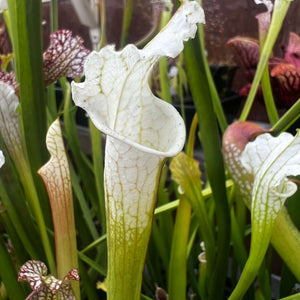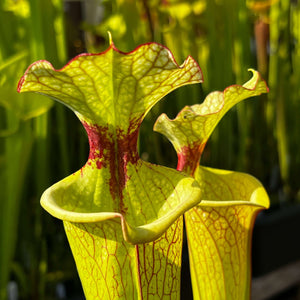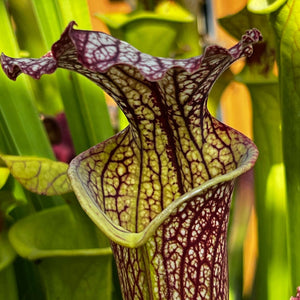Description of Iris pseudacorus (Yellow Flag Iris)
Iris pseudacorus, more commonly called the Yellow Flag Iris, is a hardy perennial plant. It originally comes from Europe and parts of Asia. This iris is famous for its bright yellow flowers. It does very well in wet places, which makes it a top pick for water gardens, pond margins, and boggy areas.
Appearance and Growth
Iris pseudacorus usually reaches a height between 90 and 120 centimetres. It grows in an upright, fan-like shape. The plant has long, sword-shaped leaves that are a deep green colour. These leaves form a lush background for the large, cheerful yellow flowers.
The flowers appear from late spring to early summer, often from May to June. Each flower has three petals that stand upright and three that curve downwards. The downward-curving petals often have a subtle ruffle. This gives the flower a detailed look. The yellow petals create a strong visual effect against the green leaves. It becomes a clear focal point in any damp or aquatic setting.
Where and How to Grow It
This plant grows best in full sun but can manage in partial shade. It needs soil that is consistently moist or even waterlogged. It is perfect for the edges of ponds, streams, or in bog gardens. You can also plant it in shallow water up to about 30 centimetres deep. Iris pseudacorus is fully hardy in the UK. It can handle frost and will come back strongly each spring.
Plant Care and Propagation
The easiest way to propagate Iris pseudacorus is by division. You can split the rhizomes in late summer or early spring. Dividing the clumps every few years helps keep the plant vigorous and promotes good flowering. Once established, it needs little looking after. You might need to thin it out occasionally to stop it from becoming too crowded. Removing old flowers can encourage more blooms and keeps the plant looking neat.
Garden Uses and Benefits
Iris pseudacorus works well in ornamental water gardens and bog gardens. You can plant it on its own, in groups, or mix it with other moisture-loving plants. Its flowers add a splash of colour, and its leaves give structure and texture. The plant is also great for wildlife. Bees and butterflies visit the nectar-rich flowers. In a wider context, its roots help to stabilise soil at the water's edge, reducing erosion. It can also help to filter water, improving the quality of a pond's ecosystem.
One Important Consideration
Iris pseudacorus grows and spreads quickly through its rhizomes. In some areas, it can become invasive. It is important to manage its growth, especially in a smaller garden pond. Always check if there are any local restrictions on planting it in your area.
With its bright flowers, simple care needs, and benefits to wildlife, Iris pseudacorus is an excellent plant for any water garden or damp border. It brings beauty and practical value to aquatic landscapes.

 UK-grown carnivorous plants
UK-grown carnivorous plants







